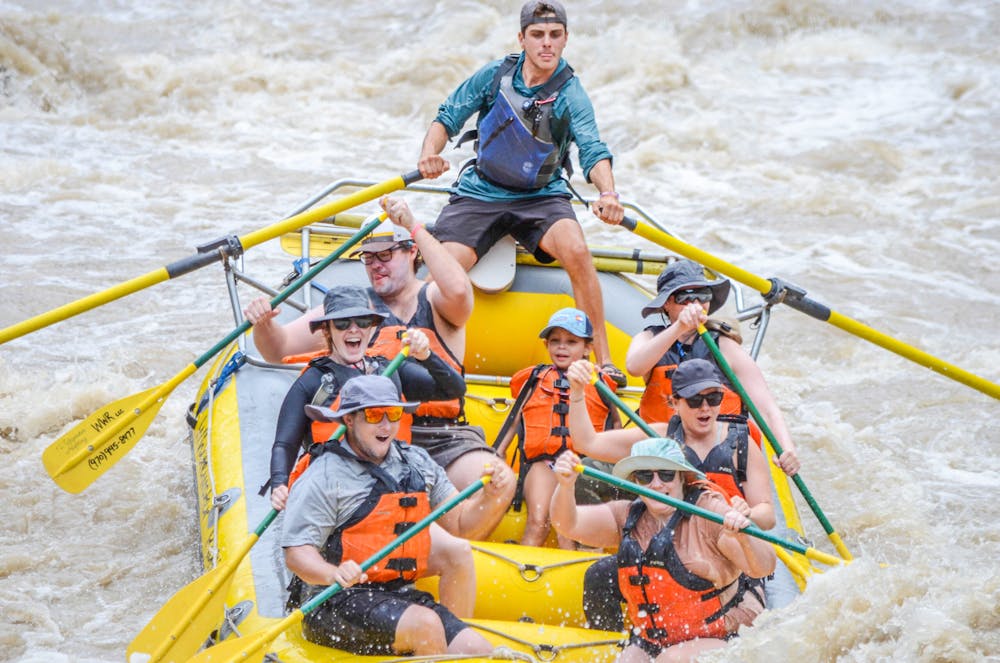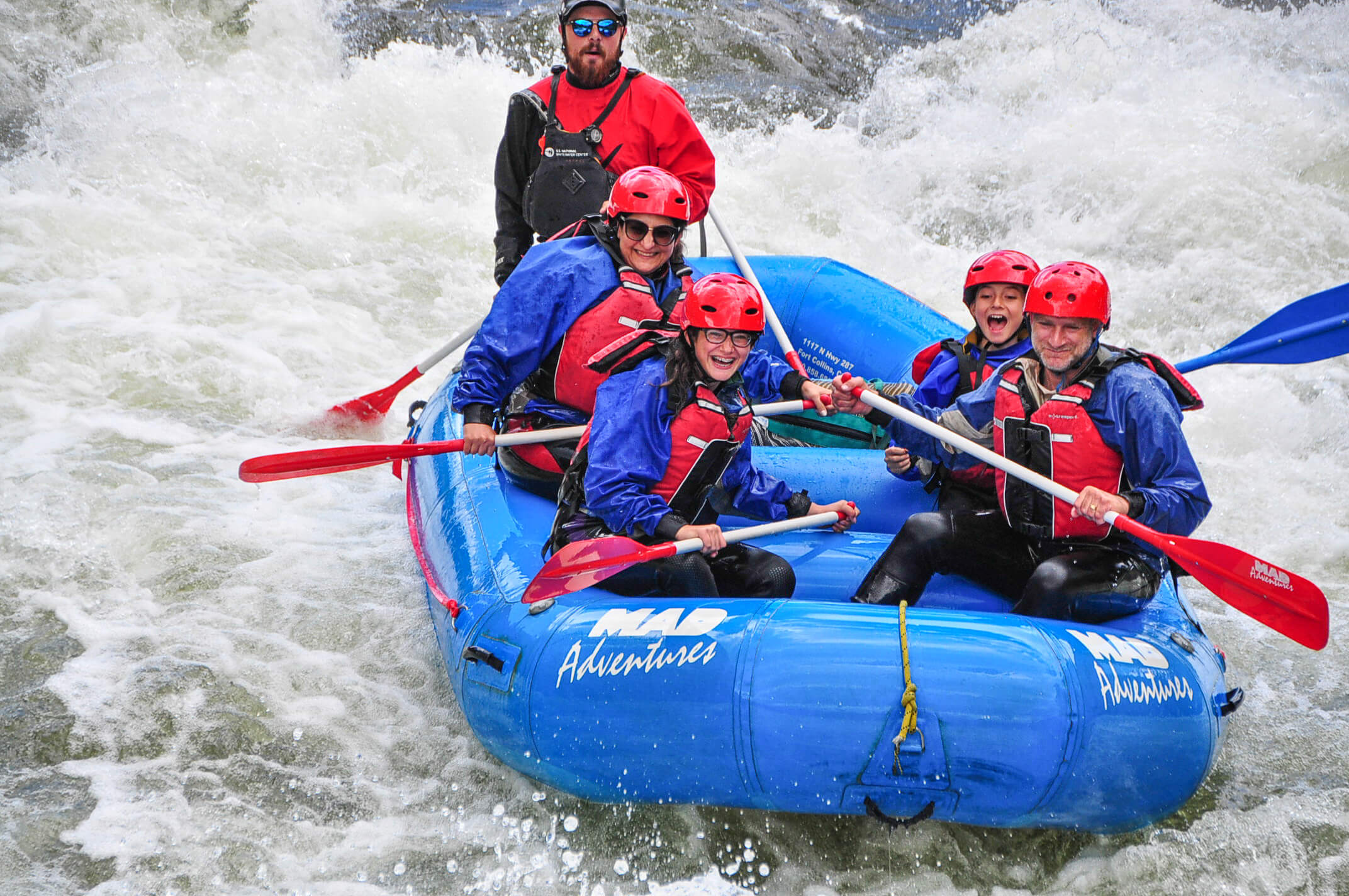Unforgettable White Water Rafting Colorado Trips Await
Unforgettable White Water Rafting Colorado Trips Await
Blog Article
Important Abilities for Water Rafting
Understanding the art of water rafting needs a mix of exact skills and expertise to browse the unforeseeable currents of rivers, making it a thrilling yet potentially harmful activity. As enthusiasts gear up to start their following experience, it is crucial to outfit oneself with necessary expertises that go beyond simply paddling. From understanding the details of river dynamics to swiftwater rescue strategies and smooth team interaction, the trip down the river demands a blend of know-how and flexibility. With safety procedures functioning as a cornerstone, participants are encountered with a multifaceted difficulty that demands a precise method and steady focus.
Paddling Strategies
Grasping effective paddling methods is critical for browsing water plethoras securely and effectively. Proper paddling not only moves the boating ahead but likewise assists in navigating and steering through varying water conditions. One basic strategy is the forward stroke, where paddlers dip the blade totally right into the water and pull it back together with the boating to generate propulsion. Timing and coordination are essential to guarantee that all paddlers remain in sync, making the most of the power of each stroke.
Apart from the forward stroke, the draw stroke is important for making fast modifications or pulling the raft more detailed to an item. By placing the paddle blade vertical to the water's surface area and pulling the water towards the plethora, paddlers can effectively change the vessel's direction. Furthermore, the backstroke functions as a beneficial tool for supporting or reducing down the raft when necessary.
River Reading
Reliable paddling methods, such as the forward stroke and attract stroke, play an important function in navigating and analyzing river currents, an ability recognized as river reading. River analysis involves the capacity to assess the rate, depth, and instructions of the water flow to make educated choices while navigating rapids. By comprehending how the water moves around challenges and via various channels, rafters can select the very best course to safely go across the river.
One secret facet of river reading is acknowledging numerous kinds of currents, consisting of waves, swirls, and hydraulics, and recognizing how they can impact the plethora. Eddies, for example, are areas where the water flows in a round activity, typically giving opportunities for rest or calculated maneuvers. Waves can show the presence of rocks or obstacles, calling for fast changes in paddling technique. Hydraulics, frequently recognized as "openings," are locations where water recirculates back upstream, posing possible risks to boatings.
Understanding the ability of river analysis is crucial for pleasurable and risk-free rafting experiences, making it possible for paddlers to navigate challenging waters with self-confidence and precision.

Swiftwater Rescue
Understanding swiftwater rescue methods is crucial for water rafting enthusiasts to respond properly in emergency circumstances on fast-flowing rivers. Swiftwater rescue includes a my response collection of specialized abilities and expertise aimed at safely drawing out people from swift-moving water. One vital aspect of swiftwater rescue is recognizing the hazards existing in fast-flowing rivers, such as filters, undercut rocks, and solid find more info currents, to intend and execute successful rescue operations.
Appropriate devices is necessary for swiftwater rescue, consisting of toss bags, rescue ropes, headgears, and individual flotation protection tools. Rafting fanatics should be adept at using this equipment in high-stress scenarios to ensure the safety of themselves and others. Additionally, swiftwater rescue techniques typically include teamwork and sychronisation among rafters to perform complex rescue maneuvers efficiently.
Learning swiftwater rescue is very advised for people taking part in water rafting activities, as it equips them with the required skills to manage emergency situations quickly and efficiently. White Water Rafting Colorado. By understanding and exercising swiftwater rescue techniques, water rafting enthusiasts can boost their security and that of their fellow rafters on challenging river explorations
Group Communication
Reliable team effort in water rafting depends heavily on smooth interaction amongst employee to guarantee worked with and safe navigating with difficult river conditions. Succinct and clear communication is crucial for the success of any kind of rafting expedition. Group participants should be able to effectively share essential information such as paddling commands, caution signals, and navigational directions.
In the hectic and commonly unpredictable environment of river rafting, timely and accurate communication can indicate the difference in between a successful run and a potential disaster - White Water Rafting Colorado. Each team participant plays a vital function in the total communication procedure, whether it be listening attentively to the overview's instructions, communicating details to various other paddlers, or signaling for assistance when needed
Establishing an usual language and communication system before striking the water her explanation is crucial. This guarantees that every person gets on the same page and recognizes just how to interact properly throughout the rafting trip. By promoting a society of open interaction and common respect, rafting teams can improve their efficiency and safety and security on the river.

Safety Methods
In the context of water rafting, the structure of team interaction developed during explorations is additional enhanced with rigorous adherence to security methods. Security protocols are critical in making sure the well-being of both rafters and guides during water rafting excursions. One important security method is the correct putting on of individual flotation protection devices (PFDs) by every person on the boating. PFDs are critical in emergency situations to keep participants afloat and give buoyancy. Additionally, rafters should be well-versed in swiftwater rescue methods and procedures in instance of a person falling over the top or if the raft capsizes.
Another trick security procedure is the comprehensive briefing given by guides prior to beginning on a rafting trip. By purely adhering to these safety methods, water rafting tours can be both safe and awesome for all participants entailed.
Final Thought
To conclude, understanding vital abilities for water rafting is vital for a satisfying and risk-free experience on the river. Paddling techniques, river analysis, swiftwater rescue, group communication, and safety methods are all crucial elements that contribute to an effective rafting journey. By developing these abilities, rafters can navigate difficult waters with confidence and make sure the safety of themselves and their team participants.
Mastering the art of water rafting needs a mix of accurate abilities and knowledge to navigate the uncertain currents of rivers, making it a thrilling yet potentially hazardous task. By placing the paddle blade perpendicular to the water's surface and pulling the water towards the boating, paddlers can properly alter the vessel's instructions.Understanding swiftwater rescue methods is critical for water rafting enthusiasts to respond effectively in emergency circumstances on fast-flowing rivers.Reliable teamwork in water rafting depends greatly on smooth interaction among team members to make sure worked with and safe navigation through tough river conditions.In final thought, grasping necessary abilities for water rafting is crucial for a risk-free and pleasurable experience on the river.
Report this page